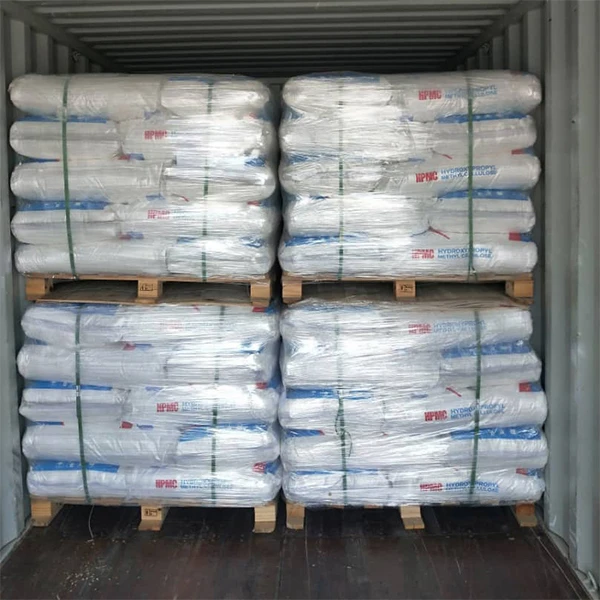The Significance of Chemical HPMC in Modern Applications
Hydroxypropyl methylcellulose (HPMC) is a fascinating compound that has carved a niche for itself across various industries due to its unique chemical properties and versatility. This semi-synthetic polymer is derived from cellulose, a natural polymer found in the cell walls of plants, and has been modified to enhance its functionality. The importance of HPMC in modern applications cannot be overstated, as it plays pivotal roles in pharmaceuticals, food production, construction, and more.
Chemical Structure and Properties
HPMC is synthesized by the reaction of cellulose with propylene oxide and methyl chloride. The result is a compound that offers enhanced solubility in water as well as adhesive properties. The degree of substitution, which is the ratio of hydroxyl groups that are replaced by hydroxypropyl and methyl groups, significantly influences its viscosity, solubility, and gel-forming capacity. This modification allows HPMC to exist in various forms, making it suitable for different applications.
One of the most appealing traits of HPMC is its ability to form gel-like networks when hydrated, providing a useful property in many formulations. Additionally, it is heat-stable and retains its properties over a wide range of temperatures, which is crucial in industries where temperature control is challenging.
Applications in the Pharmaceutical Industry
In the pharmaceutical sector, HPMC is widely used as a binder in tablet formulations, ensuring uniformity in the distribution of active pharmaceutical ingredients. It acts as a thickening agent and a stabilizer in suspensions and emulsions, enhancing the overall efficacy of drug delivery systems. The controlled-release characteristics of HPMC polymers allow for the gradual release of medications, improving therapeutic outcomes and reducing side effects.
Moreover, HPMC is often used in ophthalmic solutions due to its ability to retain moisture on the ocular surface, providing relief for patients suffering from dry eye conditions. Its biocompatibility further solidifies its position as a preferred excipient in a myriad of pharmaceutical formulations.
Role in the Food Industry
chemical hpmc

In the food industry, HPMC serves as a food additive, primarily known as E464. It acts as a thickening agent, stabilizer, and emulsifier, contributing to improved texture and mouthfeel in products such as sauces, dressings, and dairy items. Its ability to create stable emulsions makes it particularly valuable in low-fat and reduced-calorie products where fat replacement is a challenge.
Furthermore, HPMC is utilized in gluten-free products, where it mimics the texture of gluten, resulting in products that meet the dietary needs of consumers without sacrificing quality. By enhancing water retention, it also extends the shelf-life of baked goods, making it an essential ingredient for manufacturers.
Construction and Building Materials
In the construction industry, HPMC is a critical additive in mortar, tile adhesives, and joint compounds. It improves workability and adhesion, ensuring that materials adhere well to surfaces. The water-retention properties of HPMC prolong the setting time, allowing for better performance in various environmental conditions. Additionally, it enhances the durability of construction materials, contributing to longer-lasting structures.
Environmental Considerations
As businesses and consumers increasingly focus on sustainability, the role of HPMC is becoming even more crucial. This polymer is non-toxic and does not pose significant environmental risks, making it a desirable choice for green formulations in both food and agricultural applications. Its biodegradability adds another layer of appeal, aligning with the global shift towards eco-friendly products.
Conclusion
In conclusion, hydroxypropyl methylcellulose stands out as a vital compound with diverse applications across multiple industries. From enhancing drug delivery in pharmaceuticals to improving product quality in food and construction, HPMC’s unique chemical properties facilitate innovation and efficiency. As research and technology continue to advance, the potential applications of HPMC are likely to expand even further, solidifying its reputation as an essential ingredient in modern manufacturing and formulation processes. Its versatility, coupled with an increasing emphasis on sustainability, positions HPMC as a compound that will remain significant in the years to come.
-
Rdp Powder: Key Considerations for Wholesalers in the Building Materials IndustryNewsJul.08,2025
-
Key Considerations for Wholesalers: Navigating the World of Hpmc - Based ProductsNewsJul.08,2025
-
Hpmc Detergent: Key Considerations for WholesalersNewsJul.08,2025
-
Key Considerations for Wholesalers: China Hpmc For Tile Adhesive, Coating Additives, Concrete Additives, and MoreNewsJul.08,2025
-
Crucial Considerations for Wholesalers: Navigating the World of Construction MaterialsNewsJul.08,2025
-
Key Considerations for Wholesalers Sourcing Additive For Cement, Additive For Concrete, Additive For Putty from Additive Manufacturer Shijiazhuang Gaocheng District Yongfeng Cellulose Co., Ltd.NewsJul.08,2025




